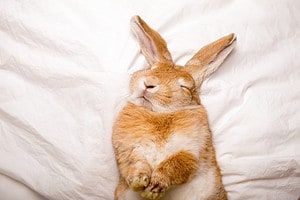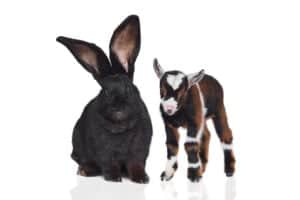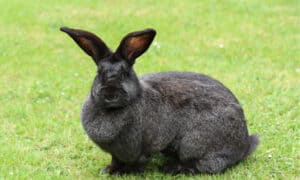It is very common to see rabbit tracks in many different environments. There are several rabbit breeds, although to the untrained eye, they may look similar to one another. Rabbits inhabit both completely natural environments, as well as people-centric areas like the suburbs.
Depending on where you are, you may be able to observe rabbit tracks. Discerning an animal’s tracks can be an interesting and useful practice. Keep reading to learn how to do so!
Background Information on Rabbits
Range and Habitat
Rabbits live on every continent, except Antarctica. The American Rabbit Breeders Association recognizes 49 unique breeds of rabbits. In North America and South America alone, there are 17 species of cottontail rabbits.
Rabbits live in a variety of habitats. They are ground dwellers, and they can live in different types of forests, wetlands, and deserts. They prefer short grassy areas. Rabbits do not shy away from areas where humans live, making them potential pests around gardens and farm buildings.
Appearance
These animals can vary a great deal in size. The longest bunny in the world, Darius the rabbit, was measured at 4 feet, 4 inches long and weighed 50 pounds! The smallest rabbit species is the pygmy rabbit, typically about 7.9 inches long and 0.9 pounds.
The long ears of rabbits are likely adaptations that help them detect the presence of predators. Rabbits are egg-shaped and full-bodied, with long, powerful back legs that allow them to jump long distances. They also have short tails that are usually just little puffs of fur.
Predators and Prey
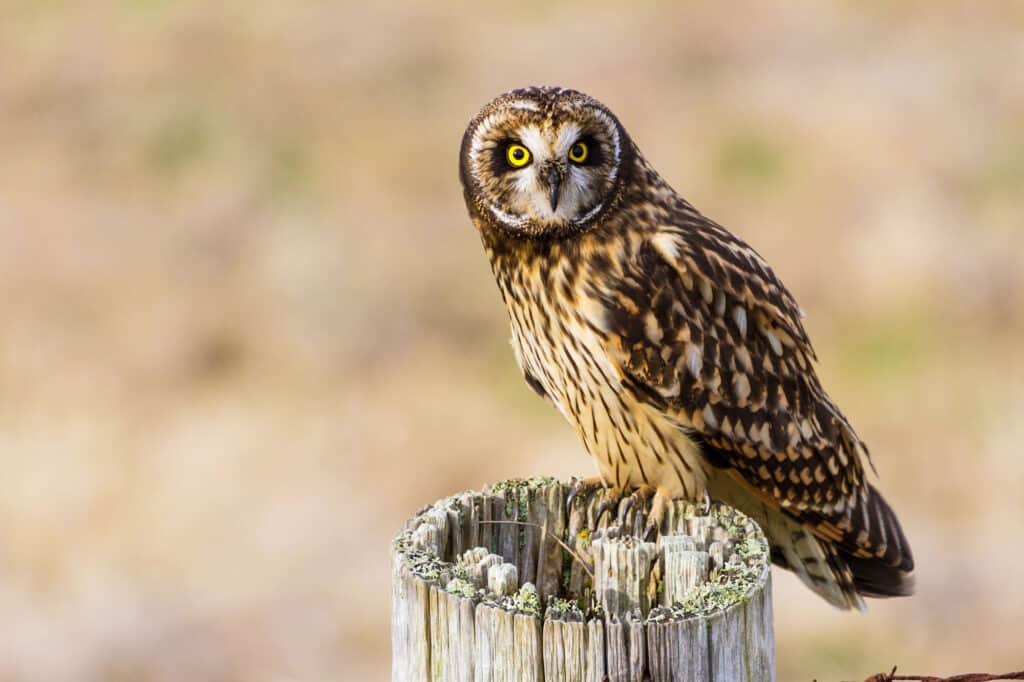
Many predators, such as owls, actually consume rabbits as their primary food source.
©iStock.com/Devonyu
Rabbits are preyed upon by many animals, mostly birds and mammals. Owls, eagles, hawks, weasels, bobcats, foxes, and wolves are common predators. Many of them actually consume rabbits as their primary food source.
Additionally, humans are a threat to both domestic and wild rabbits. People kill them for their meat and fur, as well as for sport. Almost half of the rabbit species in the world are endangered.
Rabbits are herbivores, so they do not prey on other animals. They consume large quantities of plant material, including grasses and herbs.
Rabbits also engage in coprophagy. Basically, this means they eat their own poop. They form two types of fecal pellets, soft and hard. The soft pellets are the digested plant matter. They eat these pellets in order to extract all of the nutrients and water from the plant matter that they excreted the first time.
The hard pellets are what people tend to see. These are the digested soft pellets, which rabbits leave wherever they happen to be at the time of excretion.
Activity and Movement
Rabbits are usually most active from dusk to dawn. However, when they are not disturbed by the presence of predators, they can be active at any time of day. High winds and rain also limit their activity, as these conditions make it difficult for them to detect predators.
Rabbits generally move about 500 to 650 feet daily. However, some travel almost 10 times that distance. Very young rabbits between 20 and 60 days old are more likely to move around and change social groups than older rabbits.
Differentiating Rabbit Tracks and Squirrel Tracks

.
©Jack Dagley Photography/Shutterstock.com
Because squirrels and rabbits have similar footprints, people often confuse squirrel tracks for rabbit tracks. This can make it difficult to differentiate between them. However, there are subtle differences based on their anatomy and movements.
While a set of rabbit tracks is typically rectangular or a Y-shape, the set of squirrel tracks is more likely to be a square. Squirrels have slender, long toes that appear in detail in their tracks. While rabbits often have their front feet staggered, squirrels typically have their front feet side by side. Squirrels can also jump much further than rabbits – about 4 feet at a time. However, they usually don’t.
It’s important to look at the consistency of the footprints. Sets of squirrel tracks are typically consistently between 2 and 4 feet apart. Additionally, if you see droppings, you are probably observing rabbit tracks. Other clues are the typical starting and stopping points. Rabbits typically run from underbrush to underbrush, while squirrels are more likely to move from tree to tree.
Rabbit Tracks
Rabbits have distinctive tracks. Even though these tracks are easily confused with those of other animals, there are features that set them apart.
Toes, Track Shape, and Pattern
It is difficult to be able to distinguish between a rabbit’s toes in their tracks. The toes are covered in fur, so they will not be very visible in detail.
Typically, a set of four rabbit tracks will be rectangular or in a Y-shape because of the way rabbits place their feet as they move. Usually, their front feet are staggered. They stand with their hind feet ahead of their front feet.
The back feet leave longer tracks than the front feet because of the way they jump. Typically, when they jump forward, they ground their front paws, and then land with their back feet right in front of the front paws. Then, they use their back paws to jump to the next spot.
Rabbits can jump up to 2 feet in length at a time, which should be approximately the length of the space between sets of prints.
Droppings

©KanphotoSS/Shutterstock.com
Rabbits are fairly indiscriminate about where they defecate. One possible confirming factor that the footsteps are indeed rabbit tracks is the presence of droppings.
Rabbit Tracks in the Mud
Rabbit tracks may not be easily distinguishable in the mud, although the impressions are more likely to last than in other types of ground matter. You should be able to see their paws, poorly defined toes, and the Y-shaped pattern that all four feet make together. Rabbits often live in areas that experience precipitation, so the mud is a common place to find rabbit tracks.
Rabbit Tracks in the Snow
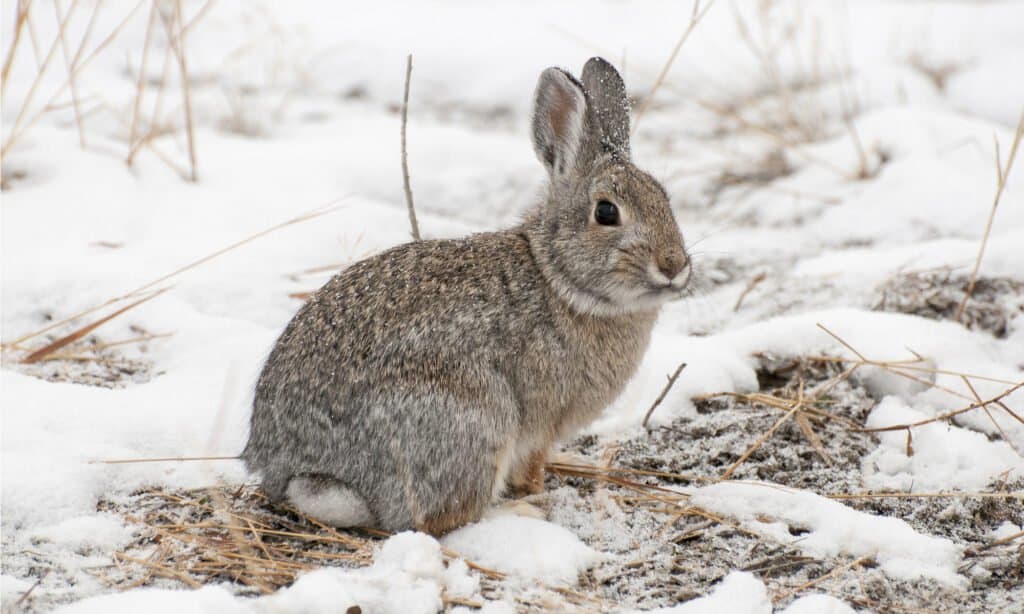
You can often easily see bunny tracks in freshly fallen snow.
©moosehenderson/Shutterstock.com
The quality of rabbit tracks in the snow often depends on the snow type. You can often easily see their tracks in freshly fallen snow. The impression may last longer if the snow is moister. If it has hardened into ice, you likely will not be able to see any tracks. Rabbits do not weigh enough to leave impressions in hard, compacted snow.
The photo featured at the top of this post is © ArCaLu/Shutterstock.com
Thank you for reading! Have some feedback for us? Contact the AZ Animals editorial team.




